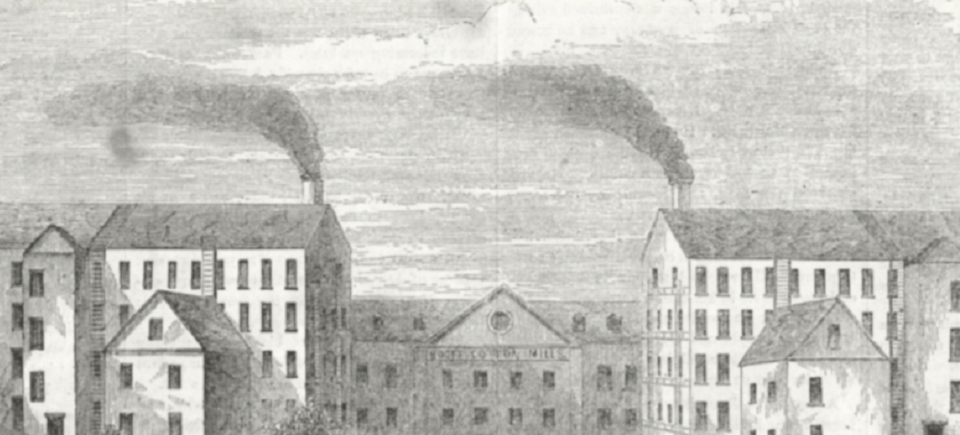

Unintended Consequences of the Industrial RevolutionThe Industrial Revolution dramatically changed every aspect of human life. In Lowell, the first few years of textile production were conducted using waterwheels, putting out significantly less carbon than English, coal-burning factories. Although there were innovations in hydropower with the development of the Francis turbine, the mills continually needed more and more power to fuel their ever-expanding operation. To supplement their water power system, steam engines were also used. Steam engines are very efficient, but require heat to make steam. This was accomplished by burning coal. By the late 1800's fossil fuels dominated as the power source for the factories of Lowell and other industrial cities. Smokestacks became symbols of industrial success and power.The modern turbine was invented in Lowell by James B. Francis, and today is employed to generate electricity at hydroelectric plants across the nation. It is ironic, then, that an invention so integral to generating green power was, in the 1800s, working alongside steam engines and smokestacks to fuel Lowell's textile industry. What does this image (above) tell you about living conditions in and around industrial cities? What does it tell you about the quality of the air?
Visit our keyboard shortcuts docs for details
Though Lowell's buildings may be made of brick, thousands of trees were used to make even a single building. Find out why this happened and what the environmental consequences are with Ranger Bernard! Climate Change is HappeningRising tempreatures bring dramatic changes in weather patterns and ecosystems. More than 97 percent of scientists agree that climate change is real and likely due to human activities. According to their data the Earth's average temperature has significantly increased over the past century, leading to rising sea levels. These graphs (below) show some of the scientific data that has been accumulated on these topics.Who should be accountable for monitoring and mitigating the consequences of industrialization?


What is Lowell NPS doing?Here at Lowell National Historical Park, we have taken steps to ensure that we can reduce our carbon footprint and protect our resources for future generations.There are small steps our staff take every day to help, including recycling, using refillable water bottles, and using carts powered by electricity. Bigger projects have also been completed! There are solar panels installed on the roof of the Boott Cotton Mills Museum (right), and a wind turbine is installed at our maintenance shop. The Boott Cotton Mills Museum is being outfitted with energy-efficient windows as well. The park also works closely with the Hull Street Energy power company. Hull Street Energy uses the historic canals in Lowell to produce green, renewable hydroelectricity, which is then sent to the grid for public consumption. Who has access to renewable resources and green technology? Why?
What can we all do?
What lessons from the past can inform our behavior in the present... or future? |
Last updated: September 26, 2020
